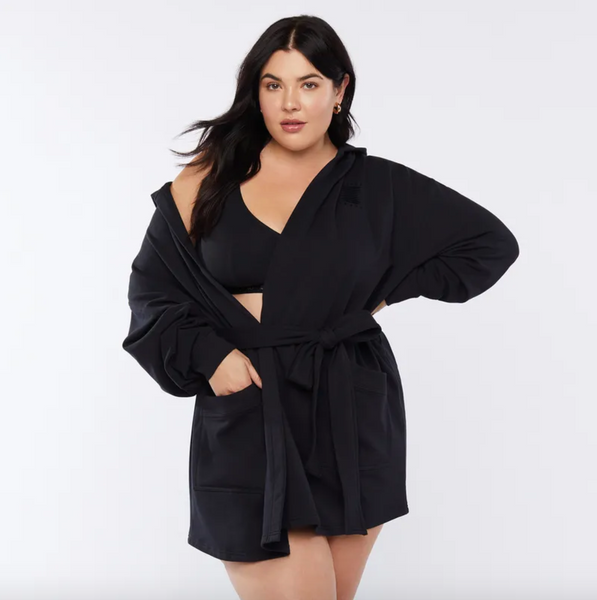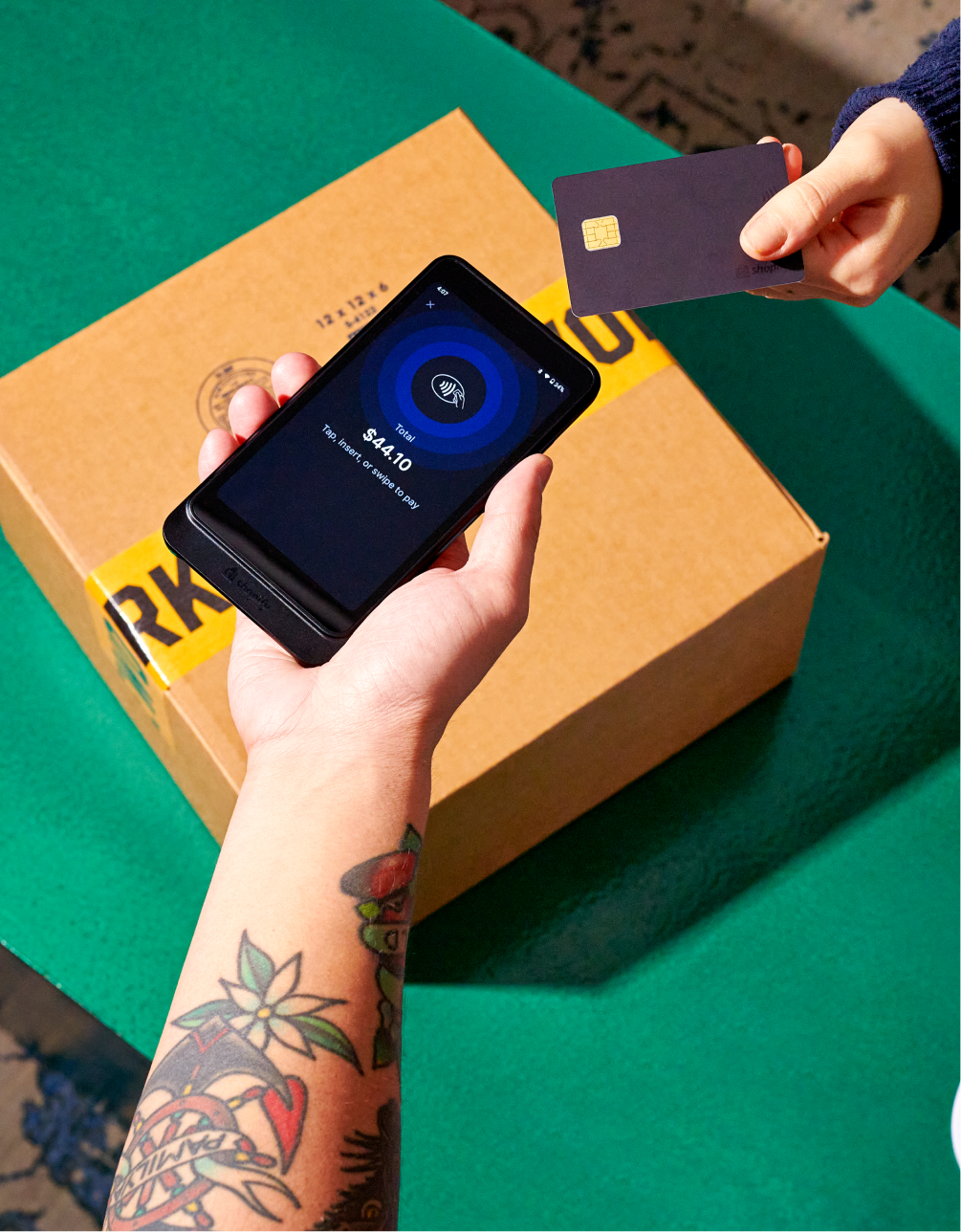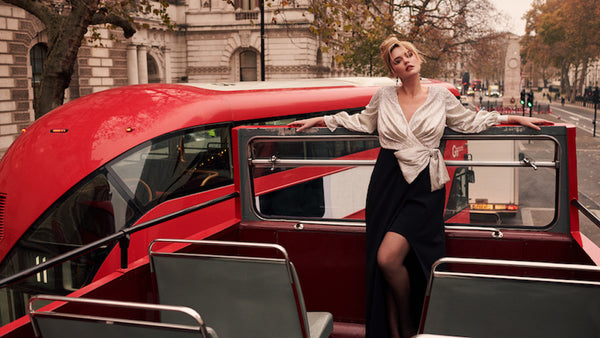For over a century, fashion brands have been shaping the way people—particularly women—think they ought to look like. And bodies that are slim, and almost exclusively white, have become a normalized visual. But the reality that retailers are facing now is that this isn’t the body of the average woman.
Fast fashion retailers have been quick to respond with inclusive sizing while luxury brands, usually responsible for determining mainstream trends, have only recently started to embrace inclusive sizing as a new priority. Bodies of all sizes and shapes are not “new” but often the fashion industry would like to make it seem that way to deflect how purposefully a body that wears a size 30 rather than a size 2 has been left out.
But change is happening. Today, new and established retailers alike are embracing inclusive sizing either from the start or learning to fold it into their ethos. Inclusive sizing is far more normalized in many new direct-to-consumer brands, which have grown alongside the public conversations that ensure fashion isn’t just for women of a certain size.
According to a Coresight Research report, the plus-sized fashion market will be worth around $31.9 billion in 2020. That is too sizable a chunk of revenue to ignore. The term “plus-size” is contentious for some but for the purposes of segmenting, tracking, and understanding an often misrepresented and misunderstood group of buyers, it’s a term that does the trick for now.
Rihanna, recently best known for promoting inclusivity and diversity with her beauty brand Fenty Beauty, is a good example of the culmination of consumer demand, social media, and brand delivery. With her Savage x Fenty runway shows in 2018 and 2019, Rihanna featured all kinds of bodies wearing the lingerie designed for her collection. It didn’t stop with plus-size wearers; the show included a pregnant woman, disabled bodies, and a variety of skin tones.
Now it’s the rest of luxury’s turn. Iconic fashion designers and houses are finally taking cues from ‘low’ fashion brands; seeing that relevancy is no longer determined by them but by the consumers who buy these clothes. The gatekeepers for so much in art and fashion, these incredible, influential designers are seeing the importance of adapting to a new norm, not a “new” body.
Learn more: Black Friday ecommerce strategies, tips, and statistics
Inclusive sizing is a fashion mainstay, not a trend
To understand why so many retailers and designers are embracing inclusive sizing, we first have to look at what any woman over a US size 14 would be offered. The perception of plus-size clothing, and therefore the plus-sized woman, has traditionally been one of utility. Universal Standard founder and chief creative officer told Retail Dive that plus-sized women bought from the “good enough pile” of clothes. The clothes normally offered were neither trendy nor that beautiful or perceived in the way straight-sized women were. Rather, plus-size clothes simply fit the person. Conscious or not, these garments ensured that plus-sized bodies remained minimized (neutrals, basics, animal designs, and “marmy” looks), and they were often tucked away in stores so if any woman beyond a size 14 needed something, they’d have to dig for it. With this comes a side of shame toward a person’s body.
Independent brands have led the charge for change when it comes to plus and inclusive sizing. For starters, plus and inclusive do not mean the same thing: Inclusive sizing means a product or design is offered in all sizes, plus or straight. Brands are the ones dictating this. The determination of category, even nomenclature, and design is up to the people who need the clothes. In other words, plus-sized women are dictating the clothes that fit their bodies.

This movement generates hype and real excitement. With the joint collaboration for Premme between Nicolette Mason, a fashion writer, and Gabi Gregg, an influencer and designer, the brand rose to incredible heights precisely because two trailblazing plus-sized bloggers decided to stop waiting around for traditional fashion brands to catch up. They made their own clothes instead. Premme, which closed up last year after its launch in 2017, was a force in plus-size fashion and inclusive sizing. Mason and Gregg designed bold, colorful and on-trend garments. Mason went on to collaborate with luxury retailer 11 Honoré around the same time, and Gregg continued with Swimsuits For All. Premme’s clothes were often trendy or edgy, telling plus-size fashion wearers that they, too, could wear a crop top or skinny jeans, and not feel ostracized for that selection. It sought to normalize that plus-size does not mean boring fashion.
The excitement around Premme was palpable among plus-size buyers. Competitors and brand collaborations popped up then. Now, Reformation has ramped up their inclusivity of plus sizes. The influential, trendy retailer Aritzia will soon be home to plus sizes, too. While theirs is only going up to a US size 18 for now, it’s a small step forward into the future, and ultimately, more growth.
11 Honoré’s luxurious innovation
There is an infamous scene in The Devil Wears Prada when Meryl Streep’s Miranda Priestly (thought to be based on Vogue’s Anna Wintour) chastises the protagonist, Andy, for not knowing the flow of fashion design and trends. During a styling meeting, Andy remarks on a blue belt that seems unremarkable to her, chafing at Priestly’s expertise in the fashion industry. What may look like a plain blue belt to Andy is really the result of a complex set of decisions, runway shows, and coverage that flow from couture down to retail stores.
And while this isn’t precisely how it works these days, we still look to luxury fashion to determine the trends for the upcoming season. Other, non-luxury retailers offer drastically reduced prices on clothing but they still at least fit within the specified trends.
In the summer of 2017, Patrick Herning launched what would become a groundbreaking endeavor: 11 Honoré, a luxury fashion retailer dedicated to plus-sized clothes. 11 Honoré is looking at what other independent retailers and designers are doing, and taking takes cues from them to fill a gap in the luxury fashion world.
The brand is explicitly built for the long-term, and home to some incredible designers, many of whom already include plus sizes in their line like Christian Sirano, a loud champion for the plus-size luxury movement. Others include Cynthia Rowley, Dolce & Gabbana, Jason Wu, and Diane Von Furstenburg, and some new brands still relatively new to the plus-size fashion journey. Herning says that there are 80 brands on the site right now with plans for more in the future. These brands, he says, “believe in our mission to make fashion more inclusive and bring the same designer collections and experience to more women.”

To prove this point, and enable and encourage a buyer base too often left behind, Herning’s endeavor is a little bit disruptive. “We have disrupted traditional fashion thinking and production to make designer collections available to women above a size 10,” he says, adding that this pathway in fashion “requires a shift in the collective mindset and a truly holistic approach to everything we do.”
One example of that holistic approach is 11 Honoré’s editorial arm of their site. Cleverly called Page 11, the retailer’s blog features interviews, profiles, and styling tips for any would-be 11 Honoré buyer. Seeing a person who looks like you reflected on a computer screen but wearing decadent, beautiful clothing will always feel uplifting and aspirational. This also reinforces a certain authority and trust a consumer can have in a brand that offers inclusive sizes. By incorporating styling content and tips, 11 Honoré is breaking into what traditional publications or brands had perhaps forgotten to do: include those with bodies normally excluded from these conversations.
It’s important to note that some brands forfeit expanding sizes because of the quandary involved with pricing: Who absorbs the cost of producing larger sizes? To ensure price parity across sizing, Herning told Vogue Business last year that 11 Honoré charges a higher price to its wholesalers. But other brands have imposed what looks like fat tax: Vogue Business cites Old Navy charging $39.99 for a straight-sized garment and $47.99 for the same one in plus. Not every brand implements the pricing structure like 11 Honoré’s, but consider other categories of sizes: tall, petite, and maternity as a few examples. Some need less material (petite), while others need more (tall) so plus sizes are no different as newer categories to invest in.
In an interview last year with Forbes, Herning said that plus-sized fashion creates dialogue about whether there is a market for expensive, luxurious plus-size clothes. He firmly believes in the luxurious woman who wears a plus size and wants to spend. He told the magazine: “I can’t point to a Harvard study or a Bain report, but I know that I have lunch every week at the Beverly Hills Hotel and within those sixty minutes there are no less than 25 women with Birkins, Love bracelets, Cartier watches, Rolexes, Ferragamos, and Chanel ballet flats that walk in wearing Eileen Fisher. So you can’t tell me that this customer doesn’t exist because I see her every day.”
Recently, 11 Honoré raised $10 million to expand the brand, with funding from Nordstrom to increase personal shopping and styling, among other strategic moves. 11 Honoré is predicting $200,000 of revenue to come in from personal styling alone, hoping to add 12 full-time stylists to help.
Building an inclusively sized future
Getting to the point of collaborating with another brand or starting your own capsule collection to test out a buying audience is something 11 Honoré’s Herning suggests. He advises that brands that haven’t embraced inclusive sizing yet but might think of doing so. “Start by starting,” he says plainly. “It can be a daunting endeavor, but each step made in a more inclusive direction is helpful. It’s why we work so closely with our brands to provide the support and guidance they may need to get there. It’s possible if you’re open to doing it.”
Last fall, at New York Fashion Week, designer Rebecca Minkoff showcased the brand’s collaboration with Stitch Fix, the personalized styling service, that offered a capsule clothing collection that was immediately available to consumers. It was the first time the brand offered sizes higher than a US 14. They ranged from 00 to 24W.
Minkoff’s brand had been working with Stitch Fix since 2017 to perfect the garments with specific data and customer feedback. “With Stitch Fix’s capabilities of using data to learn what customers really want, we’re now able to implement those insights and design a collection that makes our customers feel confident and beautiful,” Minkoff told Shopify Plus last year. Their goal is to continue to leverage the data from Stitch Fix and continue expanding their offerings to customers.
But luxury brands are still substantially outweighed by mainstream retailers. According to a Statista report, a retailer like Nordstrom had less than 1% of plus-buyers compared to a general store like Wal-Mart. Expansion is genuinely profitable. Minkoff’s luxury brand is one of many that weren’t exclusively built to cater to all sizes. But it’s an example of how a thoughtful approach to inclusivity can yield great results for everyone involved:
Minkoff’s brand isn’t the only one to venture into capsule collections. Rodarte, the dreamy, romantic luxury brand by sisters Laura and Kate Mulleavy, collaborated with Universal Standard for a capsule collection in 2019. Traditionally, ethereal beauty has been aligned more closely with thin bodies, but this collection emphatically shows how untrue this perception is. The romance is palpable. Alexandra Waldman, Universal Standard co-founder and chief creative officer, told Harper’s Bazaar: “It shouldn’t be a far-fetched possibility for women of all sizes to have access to contemporary, ready-to-wear fashion, and experience supreme quality and design when buying clothing.”
It is truly this simple: the more product offered, the less alienation of a group of people, the better the chance of a financial return. Investing authentically in plus-size garments means the buyers of those clothes will invest in you.





